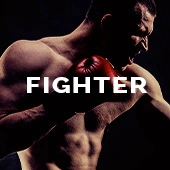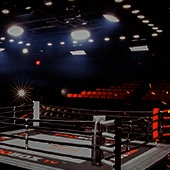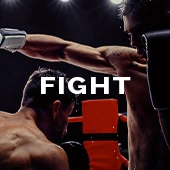Tyson Fury was a long way from Las Vegas, or even the arenas in the UK or Germany where he ultimately went from prospect to contender to champion to star.
Gatineau, Quebec, Canada. A great town, but not the place you would expect a six-foot-nine heavyweight from Manchester, England to be preparing for what was at the time the biggest fight of his career.
He had reached a solid level back home, earning British, Commonwealth and Irish titles while beating the likes of Dereck Chisora, Neven Pajkic and Martin Rogan, as well as American names Vinny Maddalone and Kevin Johnson.
But beating Steve Cunningham in his United States debut at the Theater at Madison Square Garden was going to be the 24-year-old Fury’s ticket to not only a title shot, but more important matters. And he just knew he was going to be the catalyst for change in what had turned into a dead division.
“We’re in for a bit of stir up in the heavyweights over the next few years,” Fury told me from Canada in April 2013, days before he left for New York City.
Fury headlined that night, on a card that also featured wins by his cousin Hughie, future heavyweight contender Adam Kownacki and local standout Curtis Stevens. And he was undoubtedly the star of the show, talking to anyone and everyone with a tape recorder or pen and pad, preaching his gospel to a new audience starved for a heavyweight to get them excited again.
“There’s nobody who’s come, grabbed the division by the balls, and kicked it on its head,” Fury said. “And that’s where I come in. I’m not all talk; you get these British hype jobs and these European fighters and they can’t really fight. Let’s be real. I’m a realist. If I couldn’t fight, I’d say I can’t fight. I like to be real, I don’t want to con anybody and I can fight. I can fight southpaw, orthodox, in close, outwards, upside down – whatever you want to do, I can do. I throw combinations, I punch hard, and I’m an exciting fighter. So here we are, the savior of the heavyweight division.”
It’s nearly seven years later. Fury is 31 years old and depending on who you talk to, he is either the lineal heavyweight champion (the man who beat the man) or the top big man who doesn’t have a belt around his waist. In other words, nearly everything has changed, whether it’s his bank account, his status in the boxing world, his trainer or his promoter.
Yet one thing hasn’t, and it’s his belief that he is here to save the division. Some would say it doesn’t need saving at this point thanks to his efforts and the efforts of the men with the physical heavyweight championship belts, Deontay Wilder and Anthony Joshua. Throw in the upset Andy Ruiz Jr. scored last year before losing the belt back to Joshua and dare we say the division’s in better shape than it has been in several years.
People care again. They packed Madison Square Garden and then traveled to Saudi Arabia for the two Joshua-Ruiz fights. They speak in reverential tones about the power of Wilder, calling his right hand perhaps the most potent weapon in boxing history. And if you haven’t heard about the Saturday rematch between Wilder and Fury, you’ve obviously not been anywhere social media, your television set or the local watering hole.
It’s a far cry from the days when Wladimir Klitschko ruled the division. Sure, Klitschko was a dominant champion and one of the best heavyweights ever, facts that will almost certainly put him in the International Boxing Hall of Fame when his name is on the ballot in 2020. But after an initial push from HBO to make him and his older brother Vitali stars on this side of the pond, Wladimir decided that taking his show back home to Europe, where he packed arenas and stadiums and pocketed the kind of TV money that most could only dream of. It was a smart move, but one that didn’t allow him to transcend his sport in an important market like the United States. Fury knew this all too well.
“I know the Klitschkos have been successful for the past ten years and they speak 25 different languages and they’re in great shape, but who wants to be a Klitschko?” asked Fury in 2013. “People don’t grow up thinking, ‘Yeah, I want to be like a Klitschko.’ I’m named after Mike Tyson. My name is Tyson, so he must have influenced my father. I don’t know many people who are named Wladimir because of Wladimir or Vitali because of Vitali. Because you don’t grow up wanting to be like them. But you did grow up wanting to be like Mike Tyson, Evander Holyfield, and all these other guys. And that’s what I aim to do; I aim to bring the glory days back to heavyweight boxing. It’s been dull for a while. You’ve got these European fighters that are just all jab and grab and they’re just not exciting. People are sick of being bored to death for 12 rounds, and there’s no seizing the opportunity anywhere in it. It’s like, ‘If I can knock a guy out in two rounds, I’ll take him ten just in case he throws a hook back.’ People are sick of that.”
Not surprisingly, Fury’s blunt assessment of his peers made him a fan favorite, and he retained a lot of those fans even after a series of controversial comments, a positive drug test for the banned substance nandrolone, and a highly-publicized battle with mental health issues. How he’s done that has no easy answer, though maybe it does come down to his honesty in revealing his struggles outside the ring and his willingness to put himself in the fire in it.
Beating Steve Cunningham was not easy in 2013, as he was sent hard to the canvas in the second round by the former cruiserweight champion and was trailing on two of the three judges’ scorecards when he knocked his foe out in the seventh round. That walk through the fire could have been a sign for Team Fury to put the brakes on and ease into a title fight on the domestic scene.
Yet two fights later, Fury was back in the ring with Chisora, and a year later he was fighting and beating Klitschko in Germany. It was after that November 2015 win that the wheels came off for Fury, unbeaten in the ring, yet battling for his life outside it.
Fight fans wouldn’t see him step through the ropes again for two and a half years, yet after two early 2018 tune-ups, he was challenging the baddest man on the planet – Wilder – for the WBC title. What followed was a master class of defense and ring generalship from Fury punctuated by blasts of thudding power from Wilder, one of which produced a 12th round knockdown that no one in Staples Center expected Fury to get up from. But he did, creating a magical moment that has largely been the focus of the lead-up to this weekend’s rematch.
And rightfully so. Because what every fan wants when they buy their ticket or order a fight on pay-per-view is to see heart, will, and most importantly, drama. If Wilder doesn’t knock Fury down twice and get a draw on the scorecards, a decision victory by Fury would be good for the division and the prospect of a Fury-Joshua unification fight, but no one would be beating the drums for a Wilder-Fury rematch. And if Fury doesn’t get up from the 12th round knockdown, it’s just another Wilder knockout.
Yet combined, Fury and Wilder made magic on December 1, 2018, and that’s made the rematch the biggest heavyweight fight since their first one. And the beauty of it is that those first 12 rounds earned each fighter the respect of the other, so this rematch isn’t built on bad blood or trash talk outside of the usual boasts of victory; it’s built on the reality that the two best heavyweights in the game, both undefeated, are going to meet again to see who the better fighter is.
It’s simple, really. Make the fights between the best, the fights people want to see, give them a reason to be emotionally invested, and they will show up, buy tickets, buy pay-per-views and bring the sport back into the mainstream.
Tyson Fury knew this all along. He wasn’t content with staying home and making money fighting lesser competition. He was well aware that to be a “World” champion, you had to see the world in the process.
“It’s all in the name.” he said from a hotel room in Quebec just before his assault on the world began seven years ago. “I’m a traveler, so traveling is what I do. I don’t care if it’s Africa, Indonesia, America, wherever it is, I’ll go there to fight because I’m an on the road fighter. I don’t care where it is; I’ll go to the backyard and fight them. It’s never been my style to stay in one position and just keep boxing easy people in my hometown because I don’t believe stars are born like that. If you look at the days of Muhammad Ali, he traveled all the way around the world to fight. He didn’t just stay where he was from and fight in his own country. I have 20 straight wins and I’m already 24 years old, so why not now? What’s the big wait? Most of these European fighters just stick in their own town and they build a big record on bums and just take easy fights. But when they do step up and go into the deep water, they always drown. I’ve seen it time and time again, and I’ve always said coming through that I don’t want to be another British hype job. I want to be able to fight. I’ve had tough fights coming up from my pro debut to my 20th fight, and I haven’t just fought bums. I fought some decent fighters along the way – some tall ones, short ones, power punchers, southpaws, unorthodox fighters, so I’ve got a good grounding and I’m really ready to take on whoever they put in front of me. I’m not one of them guys who’s gonna freeze and be fazed by the moment. It’s only me and my opponent in the ring on the night. It’s only a man with a pair of gloves on. In our culture, we fight for four hours outside with no gloves on, so getting punched in the face with a glove on is a luxury.”



